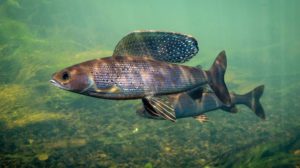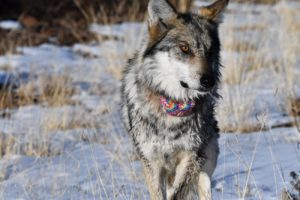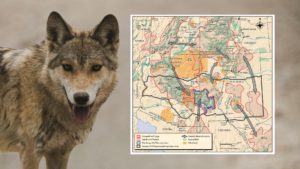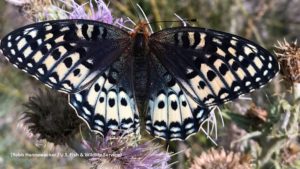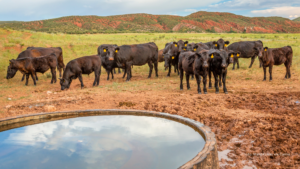Media contacts:
Sarah Stellberg, Advocates for the West, (208) 342-7024 x209; sstellberg@advocateswest.org
Erik Molvar, Western Watersheds Project (307) 399-7910; emolvar@westernwatersheds.org
Steve Holmer, American Bird Conservancy (202) 888-7490, sholmer@abcbirds.org
Joanna Zhang, WildEarth Guardians, (573) 529-6027, jzhang@wildearthguardians.org
Scott Lake, Center for Biological Diversity, (802) 299-7495, slake@biologicaldiversity.org
Maddy Munson, Defenders of Wildlife, (406) 506-7013, mmunson@defenders.or
BOISE, Ida. – Conservation groups submitted comments today on the Bureau of Land Management’s proposed changes to the greater sage grouse management plans, lamenting the potential roll-backs from protections the 2024 plans would have afforded the imperiled bird. The new management schemes would significantly weaken the existing plans, which have already proven inadequate to slow the decline of the species across its range.
The greater sage grouse is a classic indicator species for the health of the Sagebrush Sea, one of North America’s most imperiled ecosystems. According to U.S. Geological Survey studies, sage-grouse populations have declined an estimated 80 percent range-wide since 1965 and nearly 40 percent in more recent decades. Energy development, overgrazing, sagebrush removal, and the introduction of invasive plants, such as cheatgrass, have severely degraded the Sagebrush Sea, underscoring the urgent need for stronger protections to halt the species’ downward spiral.
“Sage grouse are an iconic western species in need of increased protections from disturbances like energy development, particularly as public lands suffer from growing climate impacts,” said Sarah Stellberg, staff attorney at Advocates for the West. “But BLM’s proposed plans only guarantee the bird’s continued decline. By allowing widespread development of sage-grouse habitat, these plans threaten not only sage grouse but the health of public lands and hundreds of other species dependent on them.”
The proposed changes include removing the consistent, rangewide adaptive management framework designed to detect local declines in grouse populations before they became irreversible in favor of a patchwork of weaker state protocol. The heightened protections for a subset of Priority Habitat Management Areas would also be eliminated, paving the way for major development projects in these vital habitats. The new plans would also eliminate the grass height standard for livestock grazing management, threatening to expose nesting sage grouse by removing the necessary cover that prevents predation on eggs and chicks. In Nevada and California, the new plans would allow additional disturbance from development of transmission lines and tall structures, and in Utah, habitat boundaries would be manipulated to drop large expanses of habitat, without a biological basis.
“These land-use plan amendments were supposed to afford sufficient protections for sage grouse such that Endangered Species Act protections were not warranted,” said Erik Molvar, executive director of Western Watersheds Project. “Instead, since 2015, we’ve seen spotty implementation, political compromise, and ineffective half-measures that have failed to slow the bird’s race towards extinction. The new proposed changes will make it that much harder to save the species.”
“Plans based on best-science are what will give the grouse and hundreds of other species a chance to rebound to healthy population levels,” said Steve Holmer, “What BLM is proposing falls far short of that, leaving grouse in danger and the public debate unresolved.
“The fate of greater sage-grouse is inseparable from the fate of sagebrush ecosystems,” said Joanna Zhang, endangered species advocate at WildEarth Guardians. “These plans must effectively address today’s realities — worsening wildfires, invasive species, and escalating oil and gas development to name a few. By proposing such weak management measures, the Trump administration is putting hundreds of species of plants and wildlife at risk.”
“Instead of protecting already imperiled greater sage-grouse populations, the Trump administration plans would put the birds on a fast track to extinction,” said Scott Lake, Nevada staff attorney at the Center for Biological Diversity. “This is yet another example of Trump putting industry interests over science to gut wildlife protections and bulldoze public lands. These iconic birds and hundreds of other species depend on western sagebrush landscapes and we’ve got to prevent this habitat from being ripped apart for more extraction.”
“Weakening sage-grouse conservation will yet again push this uniquely American bird closer to extinction,” said Maddy Munson, senior policy and planning specialist at Defenders of Wildlife. “The greater sage-grouse depends on an intact, robust Sagebrush Sea, a habitat that is quickly vanishing due to invasive species, development, grazing and climate change. Allowing this landscape and the species it supports to disappear is not the legacy Americans wish to leave behind.”
###

